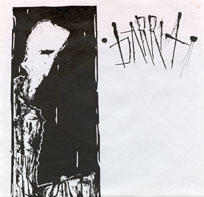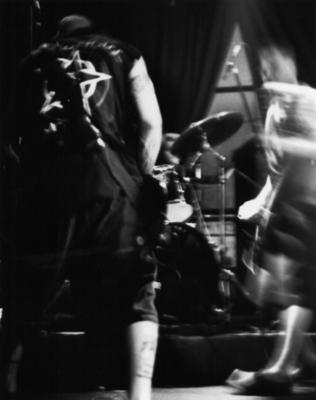187 L.A. trademark
I was introduced to heavy music primarily through two bands – Downset and Sick of it All. It was 1994 and up until then my blossoming teenage self had been content to live on an MTV-prescribed musical diet, mostly your usual grunge and indie rock suspects. I had read about hardcore and noticed the ubiquitous presence of SOIA T-shirts in my high school, but had no idea what any of those bands sounded like. But in my little German town there was one club close to my house that frequently hosted larger parties and shows. One night we ended up at a party sponsored by a well-known alternative music magazine. I walked in right as Downset’s ‘Anger’ started playing and was floored. A few days later I picked up their record, along with Scratch the Surface, and somehow I knew that this would change everything for me as far as my musical preferences were concerned. I began to pay more attention to the bands that were coming through town, and thus ended up going to my first hardcore show a few months later.
It was a weeknight and the club was almost empty. I was getting ready for a big disappointment, but to the headliner of the night it didn’t seem to matter that a mere twenty or so people were in attendance. The singer stomped and screamed and flung around the mic stand as if to ward off throngs of stage-diving kids. They completely owned the stage and it was impossible not to be captured by the power of their performance. That band was called Warzone.
After that, I started going to as many hardcore shows as I could. But if it wouldn’t have been for Downset and SOIA, I might never have ended up checking out any other hardcore bands. Long story short, everyone has to start somewhere. So next time you see a kid wearing a Linkin Park shirt at a show, be glad he or she is there. A few years hence, that kid might be standing on stage screaming his heart out for your entertainment.
 Where was I going with that? Oh, right. Downset had their roots in the LA hardcore scene. Before starting Downset, singer Rey Anthony Oropeza fronted a band called Social Justice. It’s straight up old school hardcore, with a mix of positive and personal lyrics, sing-alongs and raised hands with X’s on the record cover. Not terribly original, but fun stuff nonetheless. As far as I know they only recorded this one 7”, entitled I refuse to lose and released on Green Records in 1992. For a comparison, I guess you could say that Social Justice was to Downset what Hard Stance and later Inside Out were to Rage against the Machine. (The proximity doesn’t end there – note the cover of Inside Out’s ‘Burning Fight.’)
Where was I going with that? Oh, right. Downset had their roots in the LA hardcore scene. Before starting Downset, singer Rey Anthony Oropeza fronted a band called Social Justice. It’s straight up old school hardcore, with a mix of positive and personal lyrics, sing-alongs and raised hands with X’s on the record cover. Not terribly original, but fun stuff nonetheless. As far as I know they only recorded this one 7”, entitled I refuse to lose and released on Green Records in 1992. For a comparison, I guess you could say that Social Justice was to Downset what Hard Stance and later Inside Out were to Rage against the Machine. (The proximity doesn’t end there – note the cover of Inside Out’s ‘Burning Fight.’) Social Justice – I refuse to lose
Social Justice – Hear the cries
Social Justice – Spiritual soul
Social Justice – Promise to God
Social Justice – Burning fight











